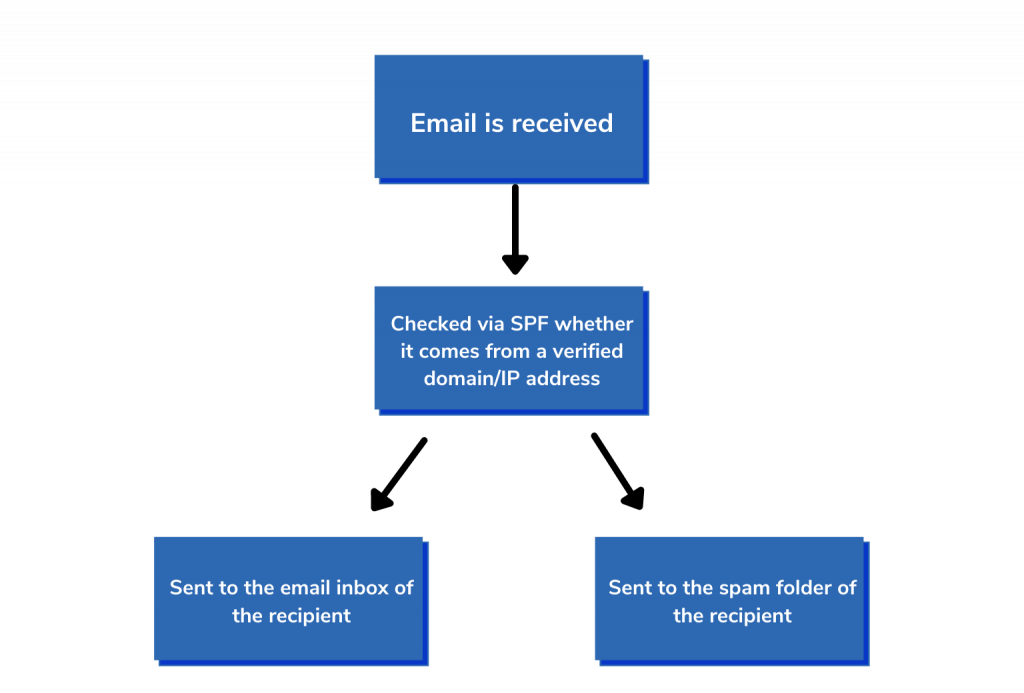Have you ever wondered why your emails are not getting a good open rate? Have you worked on your email marketing campaign again and again, and it’s still not yielding good results? If you don’t want to face this issue, you need to be aware of SPF and DKIM records. Yes, these two have a critical role to play when it comes to saving your emails from going into the spam folder. But what role is that?
Authentication is the key. While delivering an email, you need to ensure that your email seems authentic enough to pass through the ISP filter gates easily. Each email sent must pass different authentication levels, which is done using DKIM and SPF. Before understanding what significance they have, let’s understand what it is.
What is an SPF Record and Why Is It Important?
SPF is the short form of the Sender Policy Framework. It is a protocol used for validating emails and is specially designed to first sense and then block any type of email spoofing, phishing, or spam. It is pretty simple: through this, the mail exchangers know for a fact that the email is coming from a reliable source.
This is ensured by checking the IP Address and the domain. If the domain comes from an authorized IP address (through the administrators of the specific domain), it is allowed to go ahead. It is in the form of a TXT record and can be found in the Domain Name System (DNS). The DNS has all the servers and IP addresses that are allowed to send an email from a particular domain.
Once you send an email out, the ISP checks the return path of the domain before anything else. This is a straightforward and foolproof way to ensure it is not spam. The IP address of the incoming email and the registered domains are cross-checked to ensure it is not spam.

Why Do I Need To Include An SPF Record?
Sure, there is no obligation to set up an SPF record. But, having an SPF policy will make your email more trusted, and the probability of your email reaching your recipient’s inbox will increase. The easiest way is to use an SPF builder to make a list of domains that are authorized to send an email from you. This will allow you to make an SPF record of all the domains.
What Is A DKIM Record And Why Is It Important?
DKIM is the short form of Domain Keys Identified Mail. This security measure is put forth to ensure that the message in the email being sent is not changed after being sent and before being received. It works by using cryptography to assign private keys through public keys to each message. The public key is used by the server getting the email message to make sure that the DNS of the domain is the actual source of the message.
This makes sure that the message has not been tampered with at any level. This verification process leads to the completion of the DKIM process and allows the email to enter the recipient’s inbox as it shows that it is authentic.
Why Do I Need To Include An DKIM Record?
Again, DKIM is not a requirement that will ENSURE that your email won’t end up in the spam folder. But, it will increase the chances of your email ending up in the inbox rather than in the spam or junk folder. DKIM usage does not allow email spoofing, and it gets harder and harder if an email is marked with DKIM. Most of the popular ISP’s like Gmail, Yahoo, and AOL all use it as a tool to see if the email is from a reliable source or not. It is mostly used with SPF to give additional layers of security to the email.

Value of DKIM And SPF Together
For businesses that frequently send transactional and commercial emails, we recommend you incorporate both SPF and DKIM. The advantages are two-fold. First of all, your business will stay safe from spoofing and phishing attacks. On the other hand, your brand reputation and customer relationship will also increase.
Wrapping Up
Both SPF and DKIM records will provide a layer of authentication to your email. Moreover, if properly done and introduced, they can also increase and improve the deliverability and in turn increase business revenue.
CLOUDDKIMEMAILSPF



Leave a Reply